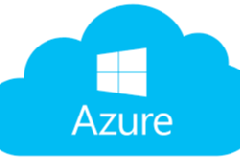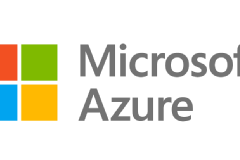Course Outline Module 1: Getting started with Microsoft Azure - This module introduces students to cloud services and the various Azure services. It describes how to use the Azure portal to access and manage Azure services, and to manage Azure subscription and billing.Lessons
- What is cloud computing?
- What is Azure?
- Managing Azure
- Subscription management, support, and billing
Lab : Using the Azure portals
- Customizing the Azure portal interface
- Viewing billing, usage, and quotas data
After completing this module, students will be able to:
- Describe cloud computing.
- Describe Azure and its various services.
- Manage Azure services from the Azure portal.
- Manage their Azure subscription and billing.
Module 2: Microsoft Azure management tools -This module explains Azure PowerShell and its use in managing Azure subscriptions. It also describes how to use the Azure SDK and the Azure CLI to manage Azure subscriptions.Lessons
- What is Azure PowerShell?
- Azure SDK and Azure CLI
Lab : Using Microsoft Azure management tools
- Using the Azure PowerShell modules
- Using the Azure CLI
After completing this module, students will be able to:
- Describe and use Azure PowerShell to manage their Azure subscription.
- Describe and use the Azure SDK and the Azure CLI to manage your Azure subscription.
Module 3: Virtual machines in Microsoft Azure -This module explains how to create and configure virtual machines in Azure and how to manage disks for virtual machines.Lessons
- Creating and configuring VMs
- Configuring disks
Lab : Creating a VM in Azure
- Create a VM from the Azure portal by using an Azure Marketplace image
- Verify the functionality of the VM
- Configure storage of a VM
After completing this module, students will be able to:
- Create and configure VMs in Azure.
- Configure disks for VMs.
Module 4: Web Apps and cloud services-This module explains how to create, configure, and monitor web apps in Azure. It also describes how to create and deploy Azure PaaS cloud services.Lessons
- Creating and configuring web apps
- Deploying and monitoring web apps
- Creating and deploying PaaS cloud services
Lab : Web Apps and cloud services
- Creating and configuring a WordPress web app
- Creating a cloud service
After completing this module, students will be able to:
- Create and configure web apps by using the Azure portal.
- Deploy and monitor web apps in Azure.
- Create and deploy Azure PaaS cloud services.
Module 5: Creating and configuring virtual networks-This module explains how to create and implement Azure networks and how to use their components to enhance the resiliency and availability of virtual machines.Lessons
- Getting started with virtual networks
- Configuring Azure networking
- Getting started with Azure Load Balancer
Lab : Create and configure virtual networks
- Creating virtual networks
- Verifying virtual network functionality
After completing this module, students will be able to:
- Describe the purpose and functionality of Azure virtual networks.
- Create Azure virtual networks.
- Describe and implement Azure Load Balancer.
Module 6: Cloud storage-This module explains the features and benefits of cloud storage. It also explains how to create, manage, and configure cloud storage in Azure.Lessons
- Understanding cloud storage
- Create and manage storage
Lab : Configure Azure Storage
- Create an Azure Storage account
- Create and manage blobs
After completing this module, students will be able to:
- Describe the features and benefits of cloud storage.
- Create and manage storage in Azure.
Module 7: Microsoft Azure Databases-This module explains the options available for storing relational data in Azure. It also explains how to use SQL Database to create, configure, and manage SQL databases in Azure.Lessons
- Understanding options for relational database deployments
- Creating and connecting to Azure SQL databases
Lab : Creating a SQL Database in Azure
- Create a new Azure SQL database in Azure and configure SQL Server firewall rules
- Manage content of an Azure SQL database by using SQL Server Management Studio
After completing this module, students will be able to:
- Describe options for relational database deployment in Azure.
- Use Azure to create, connect to, and manage content of SQL databases.
Module 8: Creating and managing Azure AD-This module explains how to create users, domains, and directories in Azure AD, integrate applications with Azure AD, and use Multi-Factor Authentication.Lessons
- Overview of Azure AD
- Manage Azure AD authentication
Lab : Create and manage Azure Active Directory tenants
- Create users in Azure AD
- Create a new Azure AD tenant and a custom DNS domain
After completing this module, students will be able to:
- Create and manage Azure AD tenants, domains, and users.
- Manage Azure AD authentication.
- Prepare on-premises Active Directory for Azure AD Connect
- Plan for non-routable domain names; clean up existing objects; plan for filtering Active Directory; plan support for multiple forests
- Set up Azure AD Connect tool
- Implement soft match filtering; identify synchronised attributes, password sync, pass-through authentication, and installation requirements; implement multi-forest Azure AD Connect scenarios
- Manage Active Directory users and groups with Azure AD Connect in place
- Create, modify, and soft delete users and groups with Azure AD Connect; perform scheduled synchronisation; perform forced synchronisation
Module 9 â?? Infrastructure as a Service (IaaS) and Virtual Machines
Virtual machines are the basis of Microsoft Azure and provide support for the platformâ??s implementation of IaaS. It is important to be able to implement virtual machines in your environment. In this module, you will:
- Learn how IaaS cloud services support Azure virtual machines.
- Select the best virtual machine size for a workload.
- Explain the differences between on-premises virtual machines and Microsoft Azure virtual machines.
- Propose which workloads in your on-premises environment might be suitable for migration to Microsoft Azure.
Module 10 â?? Creating Virtual Machines
Virtual machines can be created using the Azure portal or Azure PowerShell. There are many virtual machines types that can be deployed, including Windows and Linux machines. In this module, you will:
- Identify considerations and plan for virtual machine deployments.
- Deploy Windows and Linux virtual machines in the Azure portal and with Azure PowerShell.
- Create and manage virtual machine images.
Module 11 â?? Configuring Virtual Machines
Once you have deployed your virtual machines there are different configuration options to consider. For example, IP addressing, availability, scalability, and security. In this module, you will learn:
- Describe the implementation of public and private virtual machine IP addressing.
- Configure static and public virtual machine IP addresses.
- Make recommendations for configuring virtual machine availability.
- Make recommendations for configuring virtual machine scalability.
- Make recommendations for virtual machine security features, like security groups, firewalls, and certificates.
Module 12 â?? Virtual Machine Disks
Azure virtual machines use several types of disk, for operating systems, data, and storage. It is important to be able to configure, attach, import, and export disks. In this module, you will:
- Learn the type of disks that are supported, including operating system, persistent data, and temporary storage.
- Configure virtual disk caching and understand storage spaces.
- Attach new and existing virtual disks.
- Import and export data disks.
Module 13â?? Managing Virtual Machines
Day-to-day virtual machine management is as important administrator skill. Azure provides several tools to manage the virtual machine lifecycle, both for Windows and Linux systems. Having good management tools and configuration options helps maintaining an effective production environment. In this module, you will:
- List the tools for managing an Azure virtual machine, and usage cases for these tools.
- Describe the function of the VM Agent and VM Agent Extensions, and the use Custom Script Extensions.
- List the monitoring and diagnostics options for virtual machines.














